Photos: Saturn's Glorious Rings Up Close
New Thinking: Saturn's Rings Might Be Ancient
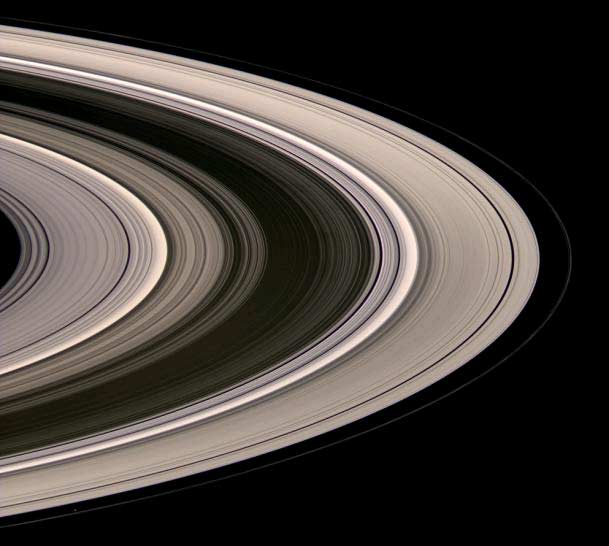
Saturn's icy rings shine in scattered sunlight in this view taken by the Cassini spacecraft wide-angle camera on July 4, 2008 at a distance of approximately 1.2 million kilometers (770,000 miles) from Saturn.
Saturn Cassini Heat Emission
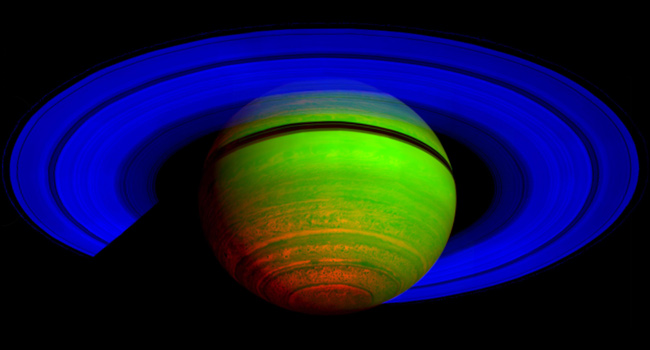
This false-color composite image, constructed from data obtained by NASA's Cassini spacecraft, shows Saturn's rings and southern hemisphere. The image was made from 65 individual observations by Cassini's visual and infrared mapping spectrometer on Nov. 1, 2008.
Surprising, Huge Peaks Discovered in Saturn's Rings
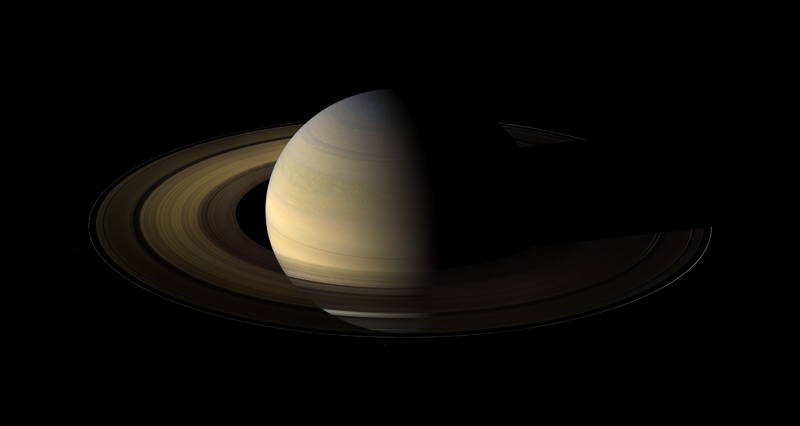
Seen from our planet, the view of Saturn’s rings during its equinox is extremely foreshortened and limited. But in orbit around Saturn, Cassini had no such problems in Aug. 2009. In this mosaic of images taken on Aug. 12, the shadows of the planet's expansive rings are compressed into a single, narrow band cast onto the planet.
Saturn Rings Cast in Rare Light
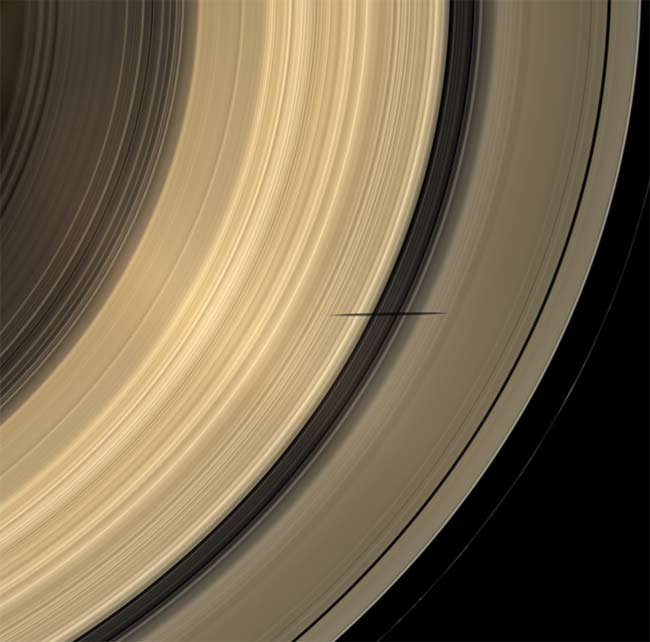
The shadow of Saturn's moon Mimas dips onto the planet's rings and straddles the Cassini Division in this natural color image taken as Saturn approaches its August 2009 equinox.
Cassini Sees Saturn's Rough and Tumble Rings

This mosaic of the Saturn system, taken by Cassini, glows with scattered light from tiny dust grains. The sun is obscured by the planet in this unusual geometry.
The Rings of Saturn

Details of Saturn's icy rings are visible in this sweeping view from Cassini of the planet's glorious ring system. The total span, from A ring to F ring, covers approximately 40,800 miles (65,700 km) and was photographed at Nov. 26, 2008.
The Rings of Saturn
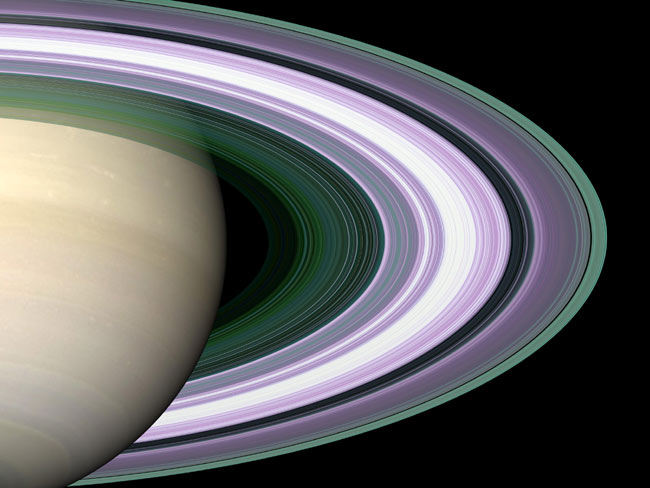
The rings of Saturn.
Get the Space.com Newsletter
Breaking space news, the latest updates on rocket launches, skywatching events and more!
Saturn's Rings to Disappear Tuesday
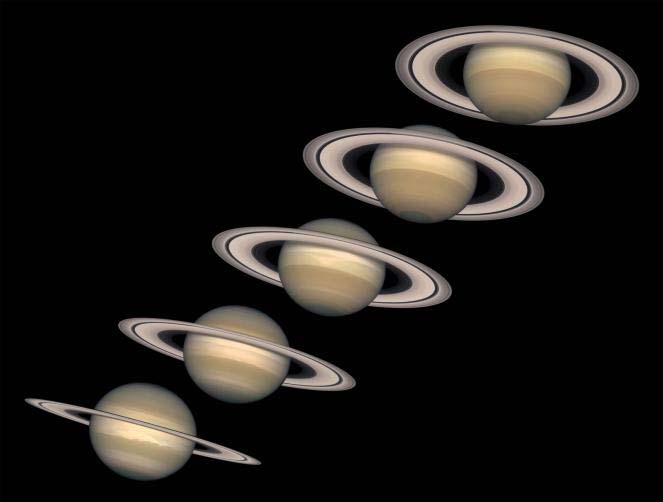
Since Saturn's axis is tilted as it orbits the sun, Saturn has seasons, like those of planet Earth. The Hubble Space Telescope took the above sequence of images about a year apart. Starting on the left in 1996, just after the last time the rings were edge-on, and ending on the right in 2000 when the rings had opened up significantly from our point of view. Image
Spectacular New Images Showcase Saturn's Rings
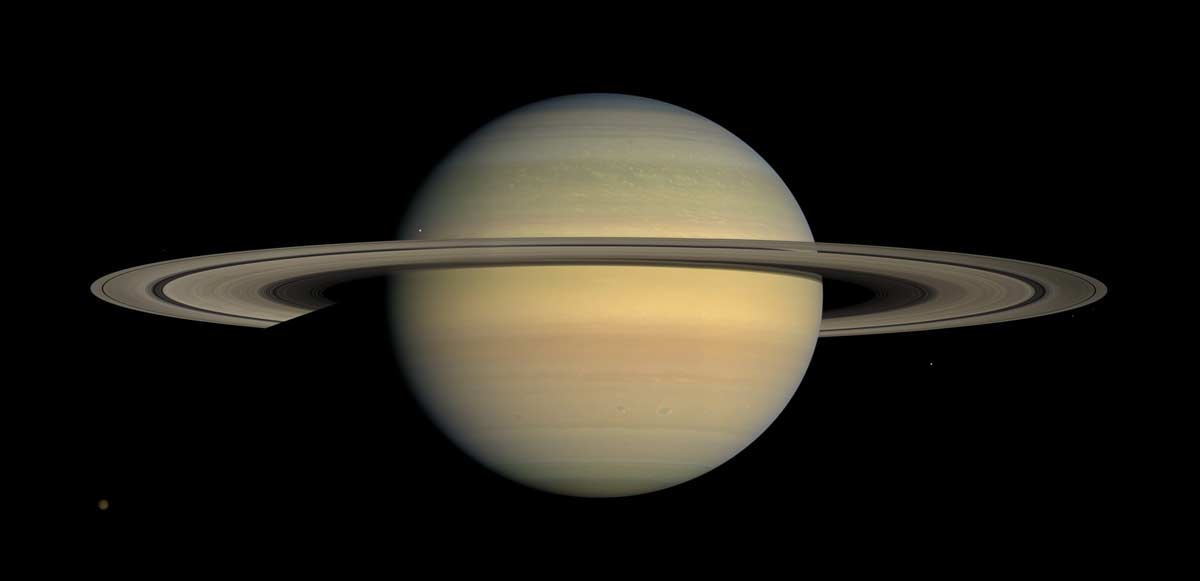
Saturn viewed by Cassini in images taken in July, 2008. Six moons complete this constructed panorama. Saturn's largest moon, Titan (5,150 kilometers, or 3,200 miles, across), Janus (179 kilometers, or 111 miles, across), Mimas (396 kilometers, or 246 miles, across), Pandora (81 kilometers, or 50 miles, across), Epimetheus (113 kilometers, or 70 miles, across) and Enceladus (504 kilometers, or 313 miles, across).
Tropical Storm Spotted on Saturn's Moon Titan
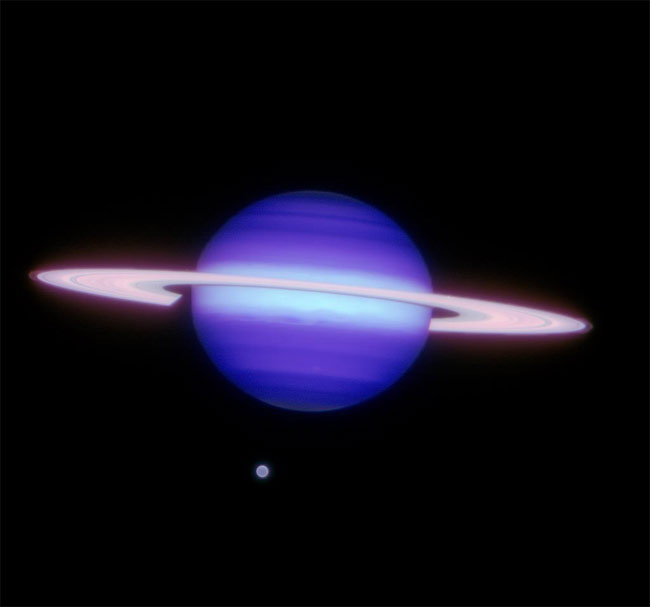
Gemini North infrared image of Saturn and Titan (at about 6 o'clock position), obtained on May 7, 2009.
Join our Space Forums to keep talking space on the latest missions, night sky and more! And if you have a news tip, correction or comment, let us know at: community@space.com.

Space.com is the premier source of space exploration, innovation and astronomy news, chronicling (and celebrating) humanity's ongoing expansion across the final frontier. Originally founded in 1999, Space.com is, and always has been, the passion of writers and editors who are space fans and also trained journalists. Our current news team consists of Editor-in-Chief Tariq Malik; Editor Hanneke Weitering, Senior Space Writer Mike Wall; Senior Writer Meghan Bartels; Senior Writer Chelsea Gohd, Senior Writer Tereza Pultarova and Staff Writer Alexander Cox, focusing on e-commerce. Senior Producer Steve Spaleta oversees our space videos, with Diana Whitcroft as our Social Media Editor.









